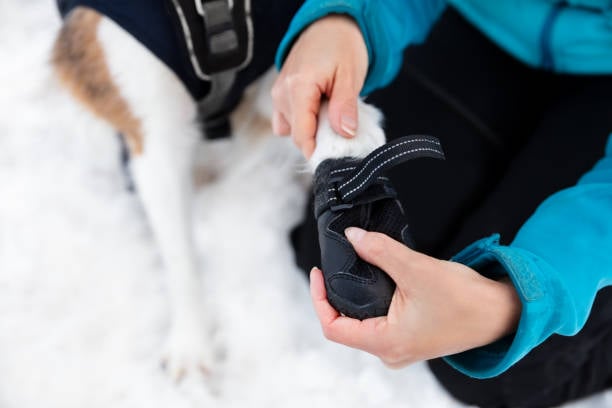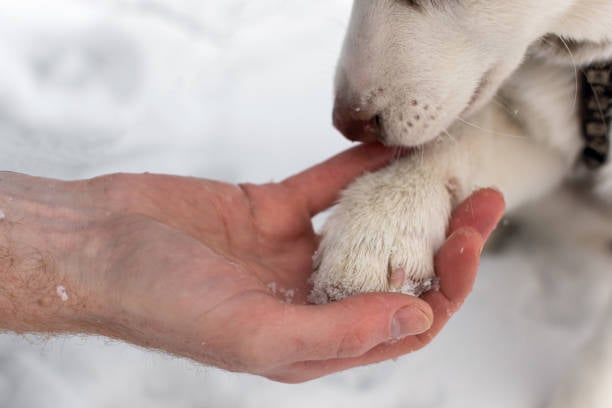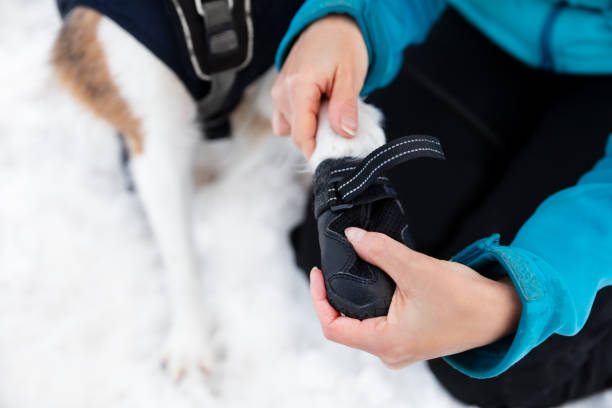As a pet-care business, it's our responsibility to provide the best care and advice to pet parents, especially when it comes to the challenges of colder climates. Winter brings with it a unique set of challenges for our canine companions, particularly in protecting their sensitive paws. This blog post is dedicated to helping pet parents understand the importance of paw care in cold weather and to offer practical tips for keeping their furry friends comfortable and safe.
Understanding the Risks
The cold weather can cause a range of issues for a dog's feet. Ice, snow, and even the salt and chemicals used to melt ice on roads and sidewalks can lead to dry, cracked, or bleeding paw pads. Furthermore, the cold itself can cause discomfort and even frostbite in extreme cases.
1. Booties: A Dog's Best Friend

One of the most effective ways to protect dogs' paws in cold weather is through the use of dog booties. These specially designed shoes come in various sizes and styles to fit different breeds and paw shapes. They not only provide a barrier against the cold ground but also protect against harmful chemicals and salt. It's important to ensure a comfortable fit, as poorly fitted booties can lead to discomfort or even injury.
2. Paw Balms and Waxes
Another great option for paw protection is using paw balms or waxes. These products create a protective layer on the paw pads, preventing dryness and cracking. They can be applied before walks and are especially useful for dogs who refuse to wear booties.
3. Regular Paw Checks
Regularly checking dogs' paws is crucial during the winter months. Look for signs of injury, such as cracks, cuts, or bleeding, and also check for ice balls that can form between the toes. If any injuries are found, treat them immediately or consult a veterinarian if necessary.
4. Shorter, More Frequent Walks

Reducing the length of walks in extreme cold conditions can help minimize the risk of paw damage. Instead, opt for shorter, more frequent walks. This ensures the dog gets the necessary exercise without overexposing their paws to harsh conditions.
5. Keep Nails and Hair Trimmed
Winter grooming is important to ensure pet safety. Long nails can cause dogs to spread their toes, allowing for easier ice and snow buildup. Keeping nails properly trimmed is essential. Also, long hair between the toes can lead to ice accumulation, so it's recommended to keep this hair trimmed.
As a pet-care business, we aim to ensure the well-being of the pets under our care. By educating pet owners on the importance of protecting their dog's paws in cold weather, we improve the quality of life for these animals and strengthen the trust and relationship between our business and our clientele. Remember, a little precaution goes a long way in ensuring the comfort and health of our furry friends during the winter season.
Let's work together to keep our canine companions happy and healthy all year round! Take your pet-care business to the next level. Schedule a demo with Gingr now!
Subscribe to the Gingr Blog






